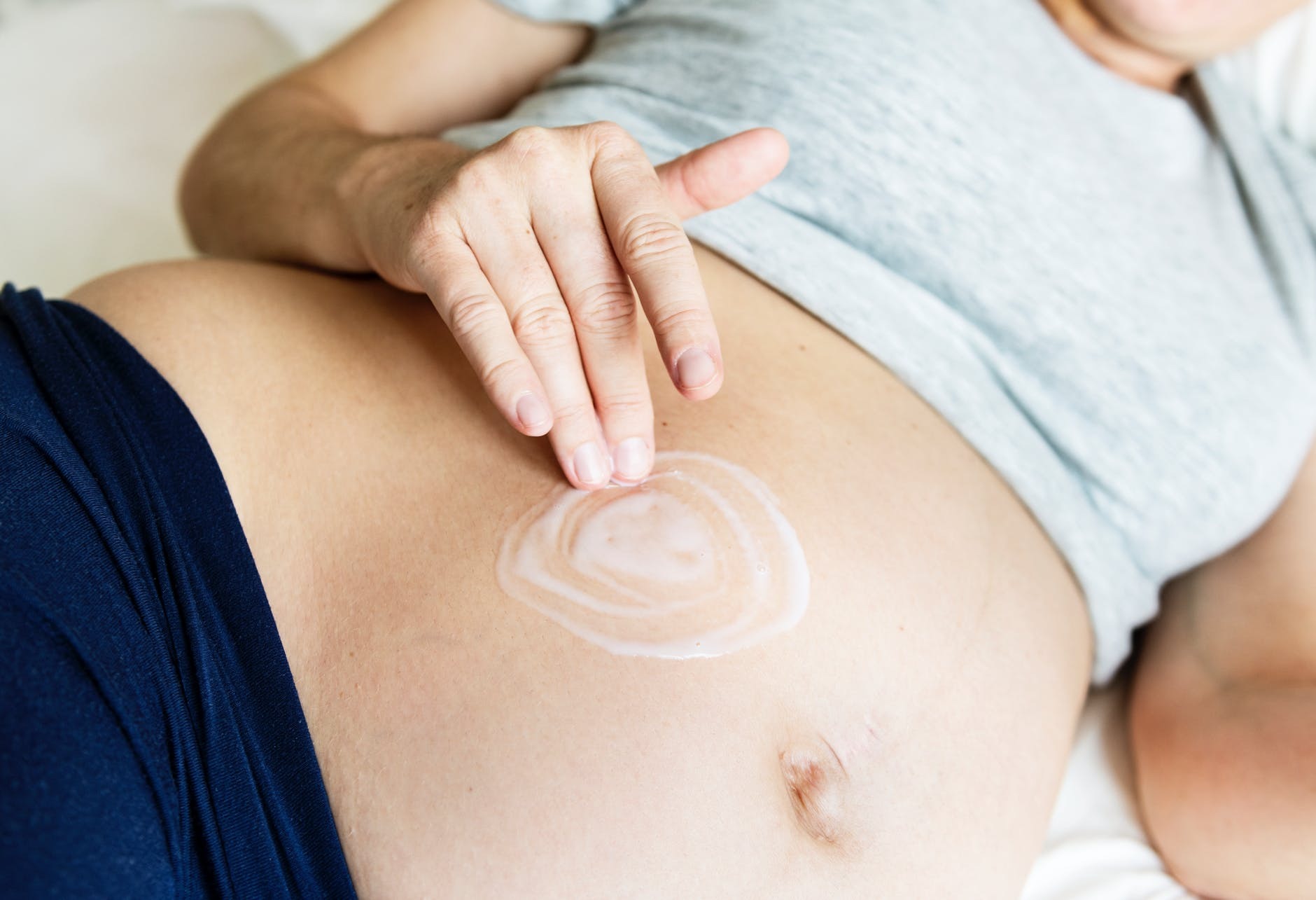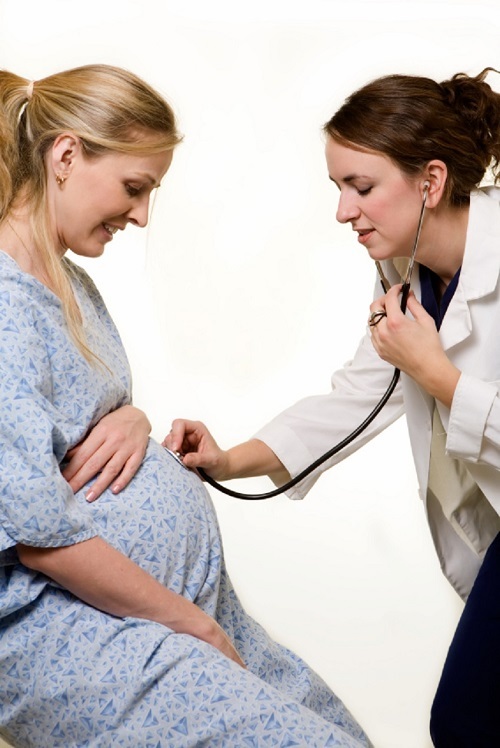Pre-Eclampsia

Pre-eclampsia is a condition that can only develop in pregnancy and its symptoms include: high blood pressure (hypertension); protein in the urine; swollen legs, ankles and fingers (oedema); headaches; nausea and vomiting; blurred or disturbed vision; abdominal pain; and excessive weight gain. It very rarely occurs before week 24 but can strike quickly and its severity ranges from slightly swollen ankles and a small rise in blood pressure to the "full blown" condition of dangerously high blood pressure and fits; this is known as eclampsia which is extremely rare.
Rare and Treatable
Around 5% of women develop pre-eclampsia with their first pregnancy. It is much less common in subsequent pregnancies. However, if you have any of these conditions, you will be closely monitored by your doctor or midwife throughout your pregnancy. 1 out of every 200 pre-eclamptic patients will develop eclampsia if the pre-eclampsia is untreated. Treatment is delivery of the baby. Current methods of monitoring pregnant women make the onset eclampsia a very rare condition.
Doctors monitor pregnancy
As the cause of pre-eclampsia is not yet known, prevention cannot be guaranteed; doctors and midwives are familiar with the symptoms, so you should attend all your antenatal check-ups to ensure that your blood pressure is monitored and early signs of the condition are noticed. If you have high blood pressure before pregnancy, you may need to change your tablets in pregnancy. Your blood pressure will be checked every one in two weeks. Low doses of aspirin may be given to pregnant women after 12 to 14 weeks, as aspirin may reduce the severity of pre-eclampsia if it occurs.

Treatable
Mild pre-eclampsia shouldn't warrant a hospital stay, but your blood pressure will be more frequently monitored and your urine checked. Relaxation, rest, gentle exercise, and a nutritious diet are recommended. If you have a severe headache, blurred vision, or your baby isn't moving as usual, you will need close hospital supervision; if your blood pressure continues to rise, drugs may be used to control it. Severe pre-eclampsia means that your baby may be delivered early, often by a Cesarean, because of the risk of your having a seizure.
Treatment for Pre-Eclampsia is not Abortion
What is it?
Pre-eclampsia is when a pregnant woman develops high blood pressure and protein in her urine after the 20th week of pregnancy (second or third trimester).
It is often an asymptomatic condition so it’s detection often relies on signs and investigations. Swelling or edema of the hands and feet are important signs for the detection of pre-eclampsia but in current medical practice only hypertension and protein in the urine are necessary for a diagnosis. Pre-eclampsia is considered severe when the blood pressure is 160/110 or higher with additional symptoms. If left untreated the condition could involve generalized damage to the cells that line the inside of blood vessels along with damage to the kidneys and liver and may affect their function. This can lead to bleeding problems, separation of the placenta before birth and sometimes stroke. Pre-eclampsia may also occur up to 6 weeks after delivery.
What causes it?
The exact cause of pre-eclampsia is unknown but may be related to a problem with the woman’s placenta. Other possible causes include autoimmune disorders, blood vessel problems and genetic causes. Risk factors for developing pre-eclampsia include first pregnancy, twins, obesity, age and a history of high blood pressure, diabetes or kidney disease.
How is it treated?
The only way to actually cure pre-eclampsia is to deliver the baby. If the baby has developed enough the doctor may want to deliver the baby so that the preeclampsia does not get worse, sometimes a cesarean section may be needed. If the baby is not fully developed and the patient has mild preeclampsia, the disease can usually be managed at home until such time as the baby has a good chance of surviving delivery. In this situation the doctor may recommend blood pressure medication, bed rest and regular clinic visits
If the pre-eclampsia is more severe the pregnant woman may be admitted to the hospital so that the specialists can observe mother and baby more closely. In hospital treatment may include medication to control blood pressure and prevent seizures, steroid injections to help the babys lungs develop (after 24 weeks). The doctor will continue to monitor the baby until it has reached a gestational period that is safe to deliver.
If a woman begins to show signs of severe pre-eclampsia including abnormal liver function tests, severe headaches, abdominal pain, pulmonary edema (fluid build up in the lungs), HELLP syndrome, kidney failure or seizures, then the baby will need to be delivered. Fortunately severe pre-eclampsia usually presents after the 28th week, with some exceptional cases. Sometimes the doctor will have no option but to intervene and deliver the baby even if it is as premature as 20 weeks. While the chances of the baby surviving this early may be slim, in Ireland, the doctor will do his or her very best to support the baby's life. The baby will be given oxygen and cared for in the same way any premature baby would be cared for. Overtime we have seen viability moved down from 28 weeks to 24 weeks, in some cases babies have been born as early as 21 and 22 weeks, and progressed well.
Pre-eclampsia most often develops in the third trimester.
The treatment for severe pre-eclampsia which is refractory to normal treatment methods is premature induction of labour or emergency cesarean section. In these extreme circumstances every effort will be made to preserve the life of the premature infant, thereby making this treatment completely different to abortion. Speaking on pre-eclampsia to the Oireachtsas Consultant Obstetrician Dr James Clinch put it like this:
“So when we interfere in the best interests of protecting a mother, and not allowing her to succumb, and we are faced with a fetus that dies, we don’t regard that as something that we have, as it were, achieved by an abortion. Abortion in the professional view to my mind is something entirely different”.

Where is the evidence?
Hypertension in pregnancy: The management of hypertensive disorders during pregnancy. National Institute for Health and Clinical Excellence (NICE) Guidelines January 2011
Expectant management of severe preeclampsia remote from term: patient selection, treatment, and delivery indications. Am J Obstet Gynecol. 2007 Jun;196(6):514.e1-9.
Induction of labour versus expectant monitoring for gestational hypertension or mild pre-eclampsia between 34 and 37 weeks' gestation (HYPITAT-II): a multicentre, open-label randomised controlled trial. BMC Pregnancy Childbirth. 2011 Jul 7;11:50.
H.E.L.L.P.
HELLP syndrome, which is a unique variant of preeclampsia (toxemia), was named by Louis Weinstein in 1982 after its characteristics:
H.E.L.L.P.
HELLP syndrome, which is a unique variant of preeclampsia (toxemia), was named by Louis Weinstein in 1982 after its characteristics:
H (hemolysis, which is the breaking down of red blood cells),
EL (elevated liver enzymes), and
LP (low platelet count).
HELLP Syndrome occurs in tandem with preeclampsia, but because HELLP Syndrome's symptoms may happen before preeclampsia's three findings (high blood pressure, protein in the urine, and swelling), they may be misdiagnosed as symptoms of gastritis, disseminated intravascular coagulation (DIC), acute hepatitis, gall bladder disease, and other conditions. If the diagnosis of preeclampsia was delayed a woman's likelihood of developing HELLP Syndrome would be higher. It can be fatal to both the mother and the baby. But this can be treated and prevented. The only definitive treatment is delivery, regardless of how far along the pregnancy is.The physical symptoms of HELLP Syndrome may seem at first like other pregnancy-induced high blood pressure conditions (such as preeclampsia).
Signs for a pregnant woman to look for include one or all of the following:
- Headache
- Nausea/vomiting
- Tenderness (stomach) and right upper quadrant pain (from liver distention)
- These symptoms may or may not be present: severe headache, visual disturbances, bleeding, swelling, high blood pressure, protein in the urine.
Babies born from H.E.L.L.P.
The good news is, in the majority of cases, the babies born to mothers with HELLP Syndrome do remarkably well. If the baby weighs over 1000 grams (approx. 2 lbs.), at birth, his or her survival rate and length of hospital stay is similar to non-HELLP babies of comparable sizes, and there doesn't seem to be many long-term adverse outcome. West Virginia University is studying long-term medical and developmental outcome of these babies.If the baby weighs less than 1000 grams at delivery, the news is not so good. Several studies have suggested longer hospital stays and more chance of needing ventilator care.